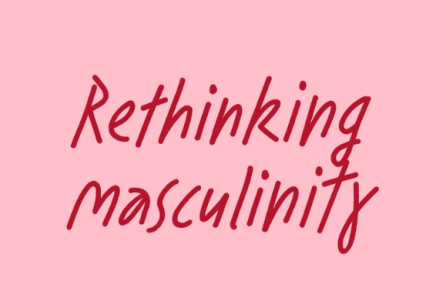The following is an interview conducted in the context of the World Industrial Design Conference in China.
Birgit Mager has lectures and taught as a guest professor in Japan, China, Korea, Taiwan, Africa, Brazil, USA, Finland, Norway, Denmark, Sweden, Austria, Switzerland, Italy, Spain, France, Portugal, Bulgaria, England, the Netherlands and Belgium.
She has conducted research projects on service design for the German ministry of research and science and also in collaboration with national and international partners like Deutsche Bank, OMV, Siemens, German Telekom, McDonalds, Nokia and many more.
Birgit Mager is Co-Founder and President of the international Service Design Network, editor in chief of Touchpoint, the international Journal of Service Design, founder and manager of Sedes Research, the Center for Service Design Research at the University of Applied Sciences Cologne. She is a member of numerous boards and juries.
The World Industrial Design Conference 2016 was held in Laingzhu, China from December 1st to 4th 2016. The conference is a world design industry development event jointly sponsored by China Industrial Design Association and design organizations, institutions, enterprises and universities from more than 20 countries and regions. The conference has had a tremendous impact on the development of industrial design in China. In 2017, the magazine will continuously do the excusive interview with the major leaders of design organizations. In this issue, we have invited the Chairman and co-founder of the World Service Design Union. Ms.Birgit Mager. The following is the content of our correspondent interviewing Chairman Mager:
Our correspondent: Hello, dear chairman Birgit Mager. Welcome to China. We are very glad to have the opportunity to interview you after the conference and we’d like to know you view, impression and understanding about the conference and meanwhile, we hope you can give some suggestions on the development of China’s industrial design.
Birgit: It was a pleasure to be part of the world conference on industrial design. It has clearly shown how serious the industrial and economical evolution in China is embracing creativity and how strong the belief in the value of design is. Our hosts have demonstrated their commitment to design and they have shared amazing examples of the existing capacities and outstanding competencies in the Chinese design community. They have also shown that they are willing to take leadership in the development of design in the worldwide perspective. Forgive me for saying so: in the past China was known for many things. Nut not necessarily for outstanding creativity and design. I think that the last 20 years the focus has been changed and that the creative and innovative Chines design will emerge and play an important role in the world of design.
Our correspondent: You are the founder of the service design research center in Cologne, Germany. You are a pioneer in promoting service design in Europe and have made a professor position majoring in service design. As the chairman of the global service design conference, would you please talk about the relationship between service design and industrial design, and it’s future status and role in the development of industrial design?
Birgit Mager: Yes, I have been the first professor for service design ever and for the last 22 year I have been developing the field of service design in theory, methodology and in practice. I founded research centers and a global network. When I started this challenging journey it was the “before digitization era” and services were defined as being mostly provided in a person-to-person relationship, it was claimed that services are not storable and that services cannot really be standardized. There was a strong reference to the three-sector theory and services were defied as the third sector.
Times have changed. Today the traditional segmentation of our economy does not make sense anymore there are no products without services and no services without material evidences. So designing today means designing systems for value in use. We have to find solutions that solve problems for people or organizations, that make their life better and that are useful and pleasant experiences. So thinking in the combination of material and immaterial components is crucial for the success of design. That means in the end that every industrial design needs to include service design and every service design needs to include technology and material evidences.
Our correspondent: Lots of worldwide design organizations, enterprises, and even well-known colleges and universities were invited to the World Conference on Industrial Design. Do you think it is feasible to build a more extensive evaluations system through institutional integration? What effect will the platform have for the development of industrial design?
Birgit Mager: I definitely think that it makes sense to join forces in the design world- independent from the specific design discipline. Even though today we are experiencing the rise of design and design thinking there is still a huge need to better evaluate the value of design, to better communicate the value of design and to improve the value of design. A worldwide network can help to raise these issues, to combine best practices and to develop new strategies. It can also serve as an inspiration. I think knowledge about design should be anchored in the educational system in general. And knowledge about evaluation of design value should be anchored in the education of designers. It is a lot about growing the knowledge and competencies and this of course something that can be institutionalized within the systems of education. On a political level design promotion can be institutionalized. Beyond that design and creativity need a lot of flexibility and open space because that is what design is about: it is about critical thinking, it is about reframing, and is about thinking the unthinkable, it is about going beyond the given. And that is normally not something that is in the nature of institutions.
Our correspondent: About 2 years ago we have succeeded in building a collaborative Service Design PhD program in partnership with six European universities and several industrial partners. I see this as an important contributions for the academic foundation in service design- which will then help to build more educational programs with highly qualified professors all over the world. I think it would be good to have intense conversation with Chinese educational partners on how to strengthen service design education and the academic development in China. I would also appreciate stronger collaborations with Chinese universities to share knowledge- but also to understand how service design needs to evolve in order to fir the Chinese culture and the Chinese economy. We do have today two Local Chanters of the Service Design Network in China, one in Beijing and one in Shanghai. These are great starting points to disseminate knowledge and to initiate practices in service design and to build bridges to other countries. My hope for the future is that the chapters will be strengthened and new chapters will be set up. I think the creative area of Liangzhu would be a great hub to coordinate an orchestrated these activities in China, Local Chapters are great but we also need a National Chinese Chapter that guides the development.
Our correspondent: Can you let us know a something about your newest publication: the Public Sector Impact Report?
Birgit Mager: In our study we have identified five different areas that are relevant for service design: policy making, cultural and organizational change, raining and capacity building, citizens engagement and digitization.
Service design is taking a role in “policy creation”. Not only does it bring in-depth insights into the needs and constraints of the citizens that help to design policies that really work for citizens- it also enables and facilitates processes of co-creation with different stakeholders. Policies are perceived as a piece of design work that is in a constant development and they are made by people for people.
Service design is also taking a role in the process of cultural and organizational change. It collaborates with other experts in this field in order to enable change by reframing the challenges, by engaging stakeholders in development of scenarios. These processes change the role of public servants from experts to partners. It is no longer the public service that is doing something for the citizens but doing it with them.
This new way of thinking and working demands not only a change in mindset, but also in the way of doing things. Service design helps to build these new capacities. Very often it is a combination of teaching learning by doing, in the process of capacity building small service design projects can be approached that create a sense of what service design can do and how to do it.
In this sentence service design works along with existing practices of citizens engagement and enriches them by the design approach. People are no longer victims of circumstances but creators of environments.
Very often we find that the digitalization of public services is the entrance door for designers. So enabling them to expand their capacities and showcase how service design does not only polish the bits and bytes but really changes the way we live and work.








Share your thoughts
0 RepliesPlease login to comment